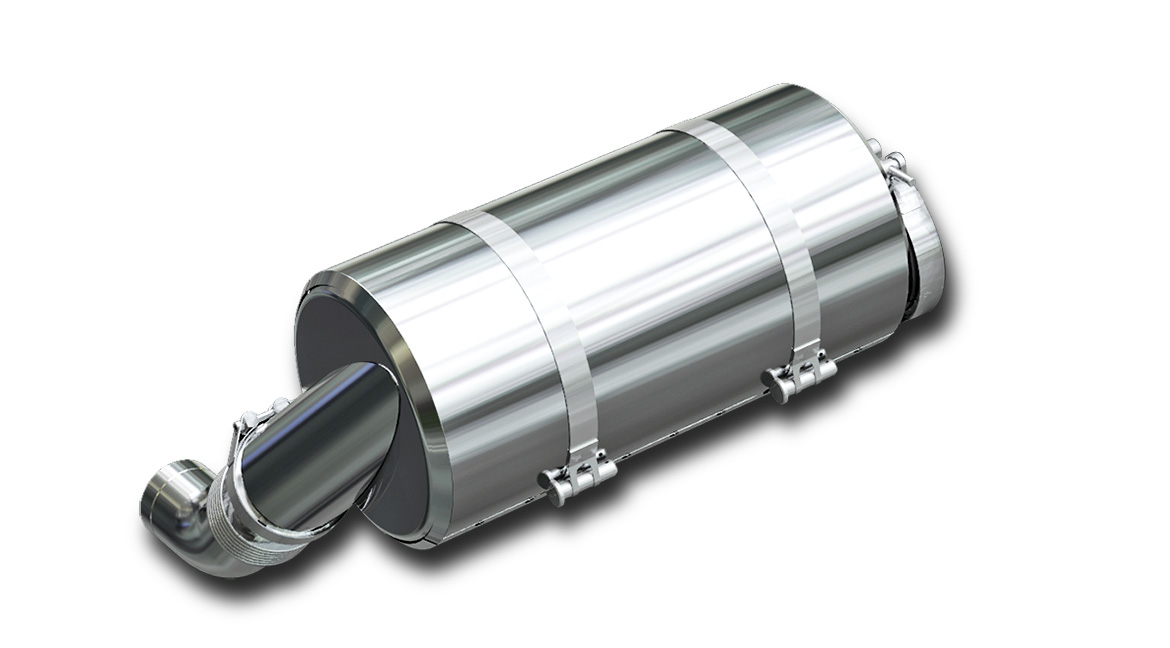Diesel oxidation catalyzers
Diesel oxidation catalyzers (DOC) are used to decrease hydrocarbon (HC) and carbon monoxide (CO) emissions. HJS has been using this technology as early as since the beginning of the 1990s.
In addition, there are numerous applications in which the DOC is used to oxidise nitric oxide (NO) to nitrogen dioxide (NO2).
Functioning method
On the catalytically active surface of the DOC, CO and HC are converted, with the aid of the oxygen (O2) mostly present in surplus, into carbon dioxide (CO2) and water (H2O). As active components, the DOC generally includes precious metals, such as platinum (Pt) or palladium (Pd).
In combination with a particle filter, the DOC is additionally used for the passive regeneration of the particle filter. The DOC first converts the nitric oxide present in the exhaust gas (NO) into nitrogen dioxide (NO2), which is then used in the downstream particle filter in order to oxidise the deposited soot (C) to CO2.
In combination with an SCR system for reduction of the nitrogen oxides (NOx), the DOC can be used to improve NOx reduction in the lower temperature range. Here, up to 50% of the NO included in the exhaust gas to NO2 is first oxidised. Then the mixture formed from NO and NO2 is reduced effectively to nitrogen (N2) and water (H2O) at the downstream SCR catalyzer.
HJS has developed technology especially suitable for the coating of the HJS sintered metal filter (SMF®), which supports the passive regeneration of the SMF®.
Area of application
Diesel oxidation catalyzers are used in almost all exhaust gas treatment systems . The fields of application extend from the passenger car, through the commercial road vehicle sector, up to the non-road market, as well as fixed in place engines.

 Go to HJS UK
Go to HJS UK

